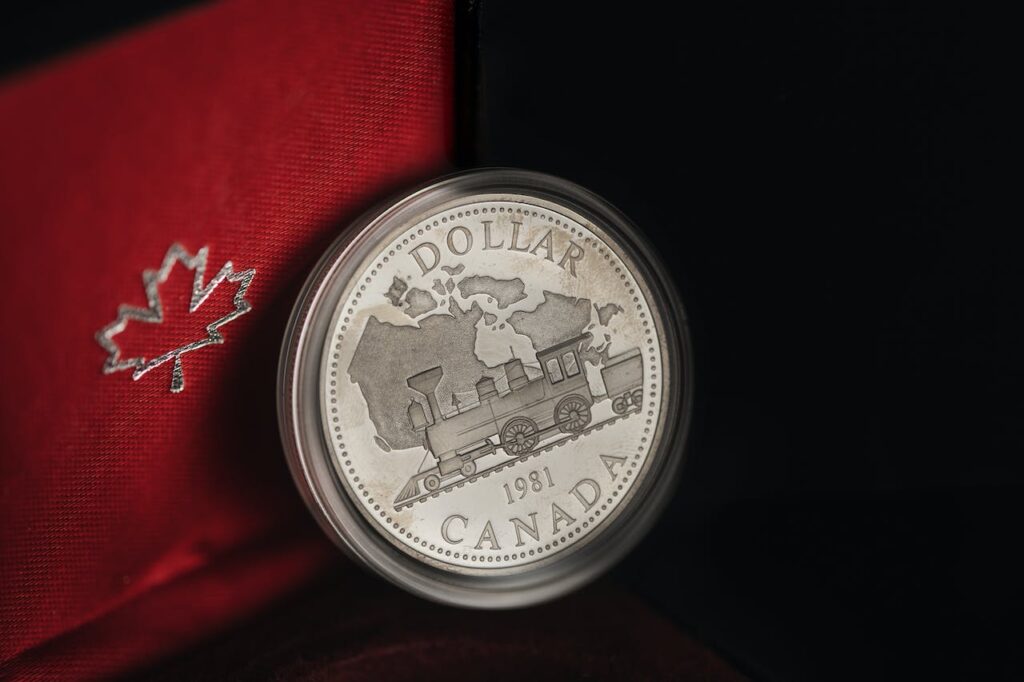Why Things Could Get Way Worse for the Canadian Dollar
The Canadian dollar, often referred to as the “loonie”, is the official currency of Canada and is closely tied to the country’s economic performance and global market dynamics. Like any currency, the Canadian dollar is subject to various factors that can influence its value relative to other currencies, such as the US dollar (USD) or the euro (EUR). While the Canadian dollar has experienced fluctuations over time, there are several underlying factors that could potentially lead to a significant decline in its value. In this article, we will explore why things could get way worse for the Canadian dollar and examine the economic, geopolitical, and market forces at play.
- Economic Vulnerabilities:
The Canadian economy is heavily reliant on commodity exports, particularly crude oil, natural gas, and minerals. As a result, fluctuations in commodity prices can have a significant impact on the Canadian dollar. For example, a decline in oil prices, driven by factors such as oversupply or weakening global demand, can put pressure on the Canadian dollar due to reduced export revenues and investment in the energy sector. Additionally, Canada’s high household debt levels and overheated housing markets in certain regions pose risks to economic stability, which could undermine confidence in the Canadian dollar. - Trade Relations and NAFTA Uncertainty:
Canada’s trade relations, particularly with its largest trading partner, the United States, play a crucial role in shaping the value of the Canadian dollar. Uncertainty surrounding trade agreements, such as the North American Free Trade Agreement (NAFTA) or its successor, the United States-Mexico-Canada Agreement (USMCA), can create volatility in currency markets. Trade disputes, tariffs, or changes in trade policies imposed by the US administration can negatively impact Canada’s exports and economic growth prospects, leading to depreciation of the Canadian dollar relative to the US dollar. - Interest Rate Differentials:
Central bank monetary policy decisions, particularly interest rate changes, have a direct impact on currency values. The Bank of Canada (BoC) sets monetary policy to achieve its inflation target and support economic growth. Changes in BoC interest rates relative to those of other central banks, such as the US Federal Reserve, can affect interest rate differentials and influence capital flows, thereby impacting the value of the Canadian dollar. If the BoC adopts a more dovish stance or lowers interest rates in response to economic challenges, it could weaken the Canadian dollar. - Global Economic Uncertainty:
Global economic conditions and geopolitical tensions can also contribute to currency volatility. Factors such as trade tensions between major economies, geopolitical conflicts, or global economic slowdowns can lead to risk aversion among investors, prompting them to seek safe-haven assets such as the US dollar or gold. In times of uncertainty, the Canadian dollar may depreciate as investors flock to perceived safer assets, putting downward pressure on its value. - Fiscal Challenges and Budget Deficits:
Canada’s fiscal health and government budget deficits can impact investor sentiment and currency values. Persistent budget deficits, driven by factors such as increased government spending or lower-than-expected tax revenues, can raise concerns about fiscal sustainability and debt levels. Investors may demand higher returns to compensate for perceived risks, leading to higher borrowing costs for the government and potential depreciation of the Canadian dollar. - Market Sentiment and Speculative Activity:
Currency markets are influenced by investor sentiment, market speculation, and herd behavior. Sentiment-driven factors, such as news events, economic data releases, or geopolitical developments, can trigger rapid fluctuations in currency values as investors react to perceived risks or opportunities. Speculative trading in currency markets, including short-selling or carry trades, can exacerbate volatility and lead to sharp movements in the Canadian dollar. - Impact of COVID-19 Pandemic:
The COVID-19 pandemic has had profound effects on global economies, including Canada. Measures to contain the spread of the virus, such as lockdowns and travel restrictions, have disrupted economic activity and contributed to recessionary conditions in many countries. The pandemic-induced economic downturn, coupled with unprecedented fiscal stimulus measures and monetary policy interventions, has created uncertainties about the pace and trajectory of economic recovery. These uncertainties can weigh on the Canadian dollar and contribute to increased volatility in currency markets. - Technological Disruptions and Digital Currencies:
The rise of financial technology (fintech) and digital currencies presents both opportunities and challenges for traditional currencies like the Canadian dollar. Innovations in payment systems, blockchain technology, and digital assets could potentially reshape the global financial landscape and alter the role of traditional currencies in international transactions. The emergence of digital currencies, such as Bitcoin or central bank digital currencies (CBDCs), could pose long-term threats to fiat currencies like the Canadian dollar if they gain widespread adoption as alternative means of payment and store of value.

In conclusion, the Canadian dollar faces several economic, geopolitical, and market challenges that could potentially lead to a significant depreciation in its value. Factors such as economic vulnerabilities, trade relations, interest rate differentials, global economic uncertainty, fiscal challenges, market sentiment, the impact of the COVID-19 pandemic, and technological disruptions all contribute to currency volatility and pose risks to the Canadian dollar. While the Canadian dollar has shown resilience in the face of past challenges, it remains susceptible to external shocks and uncertainties in the global economy. Investors, policymakers, and stakeholders need to closely monitor these factors and their implications for the future trajectory of the Canadian dollar.
